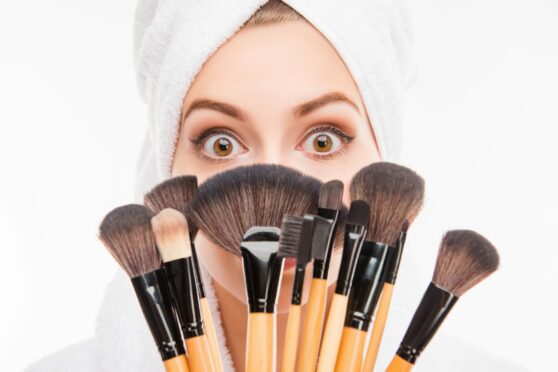
Fungus, e-coli, and staphylococcus aureus aren’t words often associated with beauty products, but your make-up bag could be harbouring harmful germs, which are then applied to your face every day alongside foundation, mascara and highlighter.
According to make-up artist Saffron Hughes, brushes and applicators should be thoroughly cleaned once a week to avoid skin irritation, blocked pores and even infections. Here, she shares top tips for banishing bacteria from your beauty routine.
Safe storage
“Despite popular beliefs, you should never store your make-up collection in a bag,” explained Hughes. “Dead skin cells and bacteria from your brushes are transferred to your make-up bag after every application – shockingly, researchers have found that 90% of make-up bags have been contaminated with superbugs, such as E.coli!
“Instead, store your make-up in drawers or on a dressing table if you have the budget and space.”
Clean routine
As well as cleaning your make-up brushes, Hughes says it’s important to clean your storage boxes and drawers, too.
She said: “Firstly, use a hair dryer to blow away all loose dirt and dust. Next, apply a mild solution of soap and water with a microfibre towel, rubbing until all marks have been removed, then rinse well with clean, clear water. Dry with a towel and make sure every single water droplet is absorbed. Moist air is the perfect humid condition for bacterial growth.”
Closed for business
Hughes continued: “After using make-up, double-check each lid is tightly shut, as moist air can enter your products and, again, create the perfect conditions for bacteria. For similar reasons, never store your make-up in an area prone to wet conditions, such as the bathroom.”
Check use-by dates
Have you ever noticed a jar symbol on your make-up products? It works as a best before date, with the number, followed by the letter M, stating how long the product should be used once opened and exposed to air. For example, 6M means six months.
Hughes said: “After this timeframe, products will decline in quality and can become a breeding ground for bacteria. What’s more, if the product has a new distinctive odour, texture or colour, it’s time to go. Mascara has a shelf life of up to six months, as do false eyelashes and setting sprays, while liquid and cream products last for 12 to 24 months. Pencils, lipsticks and glosses can be used for up to two years.”

Enjoy the convenience of having The Sunday Post delivered as a digital ePaper straight to your smartphone, tablet or computer.
Subscribe for only £5.49 a month and enjoy all the benefits of the printed paper as a digital replica.
Subscribe